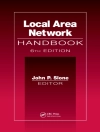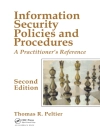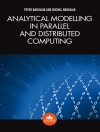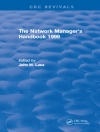This book documents the scientific results of the projects related to the Trusted Cloud Program, covering fundamental aspects of trust, security, and quality of service for cloud-based services and applications. These results aim to allow trustworthy IT applications in the cloud by providing a reliable and secure technical and legal framework. In this domain, business models, legislative circumstances, technical possibilities, and realizable security are closely interwoven and thus are addressed jointly.
The book is organized in four parts on “Security and Privacy”, “Software Engineering and Software Quality”, “Platforms, Middleware and Integration”, and “Social Aspects, Business Models and Standards”. It thus provides a holistic view on technological, societal, and legal aspects, which are indispensable not only to ensure the security of cloud services and the data they process, but also to gain the trust of society, business, industry, and science in these services.
The ultimate goal of the book, as well as of the Trusted Cloud Program in general, is to distribute these results to a broader audience in both academia and industry, and thus to help with the proliferation of ‘Industry 4.0’ services.
表中的内容
Part I Security and Privacy.- 1 Gene Cloud: Secure Cloud Computing for Biomedical Research.- 2 Sealed Cloud – A Novel Approach to Safeguard against Insider Attacks.- 3 Side Channels in Secure Database Outsourcing on the Example of the Mimo Secco Scheme.- 4 Re DS: A System for Revision-Secure Data Storage.- 5 Automatic Data Protection Certificates for Cloud-Services based on Secure Logging.- 6 A Trust Point-based Security Architecture for Sensor Data in the Cloud.- Part II Software Engineering and Software Quality.- 7 Quality Analysis Approaches for Cloud Services – Towards a Framework along the Customer’s Activity Cycle.- 8 A Model-based Software Development Kit for the Sensor Cloud Platform.- 9 TRESOR – Towards the Realization of a Trusted Cloud Ecosystem.- 10 Towards Reliability Estimation of Large Systems-of-Systems with the Palladio Component Model.- Part III Platforms, Middleware and Integration.- 11 Data Protection in the Cloud – The Mimo Secco Approach.- 12 Secure Database Outsourcing to the Cloud Using the Mimo Secco Middleware.- 13 Sensor Cloud: Towards the Interdisciplinary Development of a Trustworthy Platform for Globally Interconnected Sensors and Actuators.- 14 Testbed for the Sensor Cloud.- 15 An Architecture for Trusted Paa S Cloud Computing for Personal Data.- 16 Privacy-Preserving Cloud Computing for Biomedical Research.- Part IV Social Aspects, Business Models and Standards.- 17 Designing a Business Model for a Cloud Marketplace for Healthcare.- 18 Sensor Cloud: Sociological Contextualization of an Innovative Cloud Platform.- 19 Cutting Through the Jungle of Cloud Computing Whitepapers: Development of an Evaluation Model.
关于作者
Prof. Dr. Helmut Krcmar holds the Chair for Information Systems in the Department of Informatics at TU München (TUM) since 2002, with a joint appointment to TUM Business School. He is also Deputy Director of the Center for Doctoral Studies in Informatics and its Applications as well as Academic Director of the SAP University Competence Center @ TUM.
Prof. Dr. Ralf Reussner heads the Chair of Software Design and Quality (SDQ) at Karlsruhe Institute of Technology (KIT). He is also speaker of the executive board of the FZI – Forschungszentrum Informatik in Karlsruhe. He was founder and first head the GI Chapter on Software Architecture. His research interests include, among others, component-based software engineering, quality attributes of software, software design, and software architectures.
Prof. Dr. Bernhard Rumpe holds the Chair of Software Engineering at RWTH Aachen University since 2009. From 2003 to 2008 he headed the Institute for Software Systems Engineering at Braunschweig University of Technology. He is head of the German GI Chapter on Modeling and co-founder and editor-in-chief of the Software and Systems Modeling (So Sy M) journal with Springer. His main interests are the development and use of models for software and complex, networked systems.












